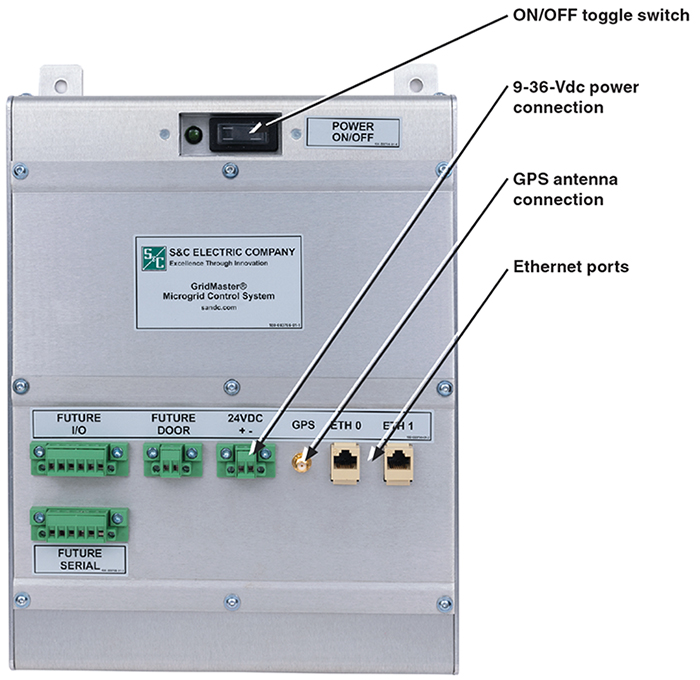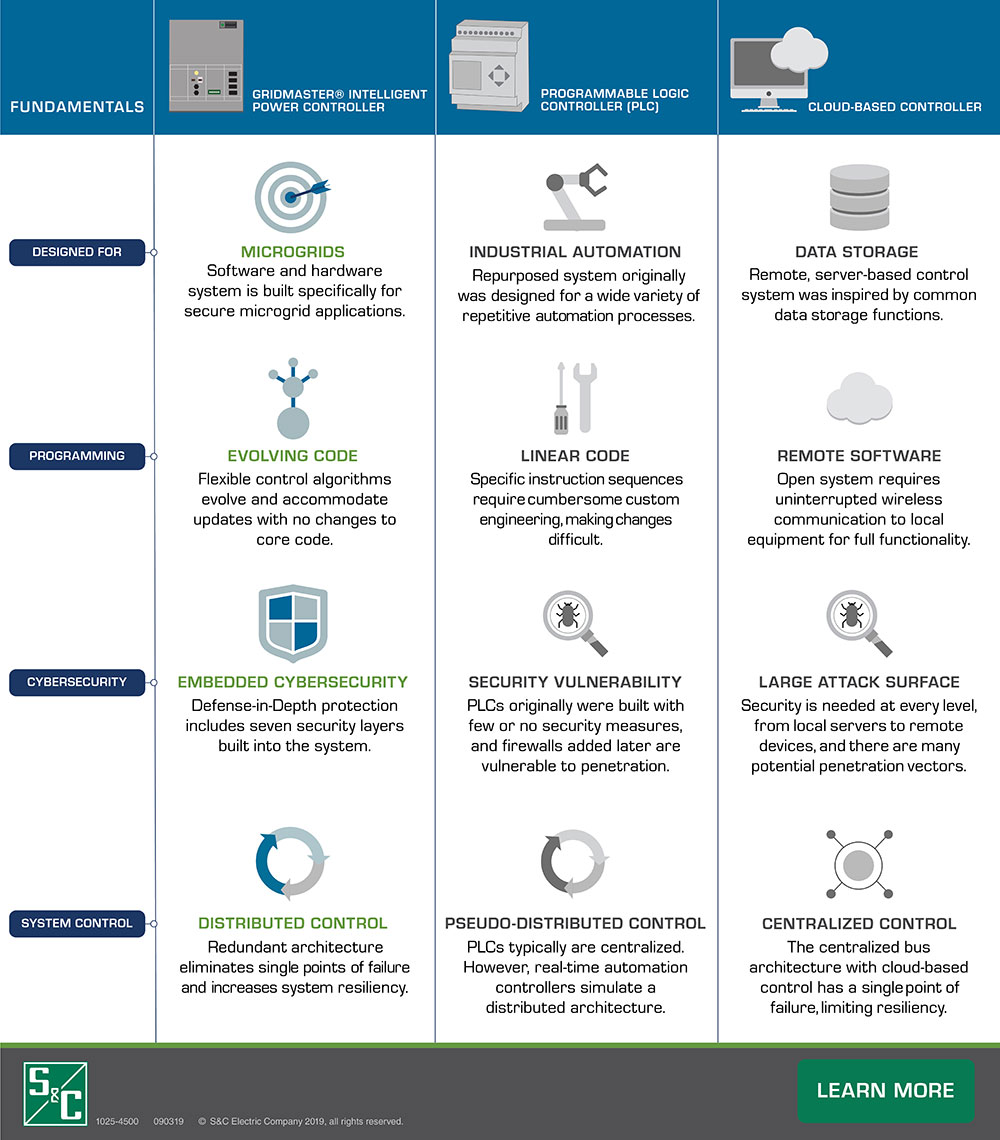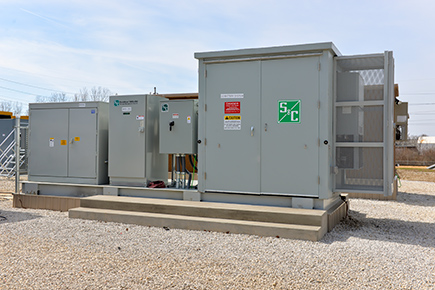As the grid changes, the need for resilient and sustainable power solutions is becoming even more imperative, and microgrids are a tool for utilities, as well as commercial and industrial businesses, to address new grid challenges and requirements. While it is often tempting for companies to cut costs and sidestep quality microgrid controls, doing so is a risky gamble. Without the right control system, your microgrid could be just a collection of expensive equipment that won’t work well together or easily fall victim to hackers.
A robust control system is critical for operating advanced microgrids. Simplifying the inherent complexity of a microgrid, the GridMaster Microgrid Control System easily integrates and communicates with a host of different energy assets. The sophisticated system is embedded with a military-grade cybersecurity protocol to mitigate the growing threat of cyberattacks and offers an intuitive user interface and the flexibility to scale as your needs change.
Advantages
Optimizes Performance & Maximizes Resiliency
Learn MoreMilitary-Grade, Embedded Cybersecurity
Learn MoreUser-Friendly & Scalable
Learn MoreCase Studies
North Bay Hydro
Microgrid Provides Resiliency Hub with Sustainable Power to Community
Read Full Case StudyEconomic Dispatch
The GridMaster controller offers economic dispatch capabilities through an easy-to-use interface. In locations with high electricity rates or utility incentives, the GridMaster can control the grid assets to provide continuous revenue and lower overall lifetime system costs.
Economic dispatch compares the cost of purchasing electricity from all resources, including the utility system and all local microgrid DERs. These costs are used to determine how to dispatch each resource. For electricity charges, both energy and peak demand charges are considered along with any seasonal and time-of-use variations. The economic dispatch algorithm accounts for any reasonable combination of time-of-use, block rates, and seasonal variations in both electrical and fuel costs. The GridMaster microgrid control system provides an intuitive interface for entering and editing these parameters.
The GridMaster economic dispatch routines account for several different cost-saving possibilities:
-
Demand reduction is used at installations where the facility is subject to high demand charges. Adaptive algorithms look at the recent history of energy use to determine the electricity use thresholds for dispatching local sources.
-
Energy arbitrage is used if there is energy storage available along with favorable time-of-use price differences in electricity. The GridMaster stores energy at times of low energy prices and then uses that energy to offset grid electricity use when the prices are high.
-
“Spark-spread” dispatch can occur when the cost of turning on and running a generator is less than the cost of purchasing an equivalent amount of energy. This strategy is typically used when fuel (e.g. natural gas) prices are low and energy prices are high. At installations with time of use electricity prices, spark spread dispatch can reduce energy costs during peak periods.
In all cases, maintenance and operating costs of the equipment are accounted for when deciding to operate a power source. An easy-to-read savings page displays in real time how much money you have saved, both in the current and previous billing period as well as since the start of the year.
Construction






